Minimalist Closet Challenge: Transform Your Wardrobe and Simplify Your Life
Picture this: It’s 6:45 AM, you’re already running late, and you’re staring into the abyss that is your overflowing closet. Sound familiar? That used to be my reality. Every morning felt like a battle against a mountain of clothes, most of which I didn’t even like or wear.
Then, I discovered the magic of minimalism. It wasn’t about deprivation or wearing the same outfit every day (though let’s be honest, sometimes that’s tempting). It was about intentionally curating a wardrobe that served me well.
I embarked on this journey with the help of Stitch Fix. It took a few months of trial and error, but finally, hallelujah, I found the perfect pair of jeans that fit like a second skin and make you feel like a million bucks. I promptly bought them in every color available and bid farewell to the 24 pairs of ill-fitting denim that had been cluttering my closet and my life.
That was my turning point. I realized that having fewer clothes didn’t mean having less style. In fact, it was quite the opposite. My closet became a haven of well-loved pieces that I actually wore, and getting dressed in the morning transformed from a chore into a breeze.
If you’re ready to ditch the closet chaos and embrace a simpler, more intentional wardrobe, the Minimalist Closet Challenge is for you. There are no strict rules or unrealistic expectations, just a commitment to progress and a willingness to let go of the excess.
Are you in? Let’s transform your wardrobe and your life, one perfectly fitting pair of jeans at a time.
Why Take the Minimalist Closet Challenge?

The Minimalist Closet Challenge can transform your daily life in several ways:
1. Reduce decision fatigue
With fewer clothes, you’ll spend less mental energy deciding what to wear, leaving more brain power for important decisions throughout your day.
2. Save time and money
A streamlined closet means quicker outfit selection in the morning. You’ll also spend less on impulse purchases and focus instead on quality pieces you truly need.
3. Decrease environmental impact
Owning fewer clothes reduces textile waste. It also encourages mindful consumption, supporting sustainable fashion practices.
4. Enhance personal style
By keeping only what you love, your wardrobe will better reflect your true style, and you’ll feel more confident in your clothing choices.
5. Simplify your life
A clutter-free closet contributes to a clutter-free mind. This challenge is often the first step towards simplifying other areas of your life.
Preparing for the Challenge
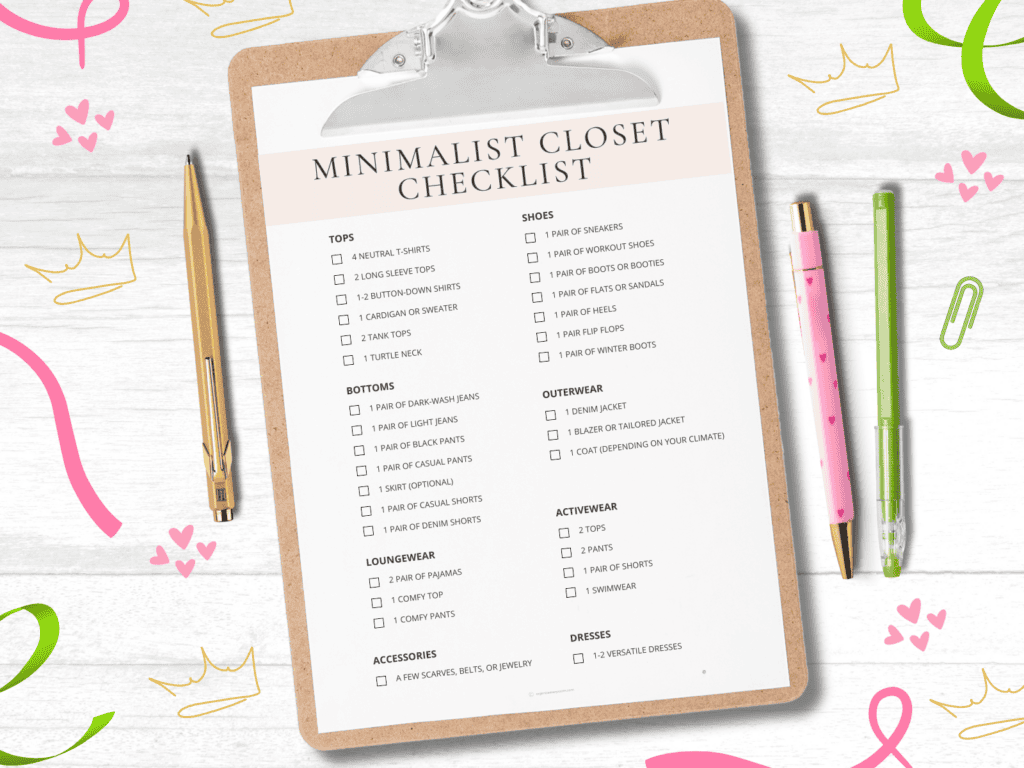
Before diving in, take these steps to set yourself up for success:
Remember, this challenge is about progress, not perfection. Start where you are and take it one step at a time.
To help you stay on track, we’ve created a downloadable Minimalist Closet Challenge Checklist that you can use to track your progress and stay motivated.
The Minimalist Closet Challenge: Step-by-Step Guide
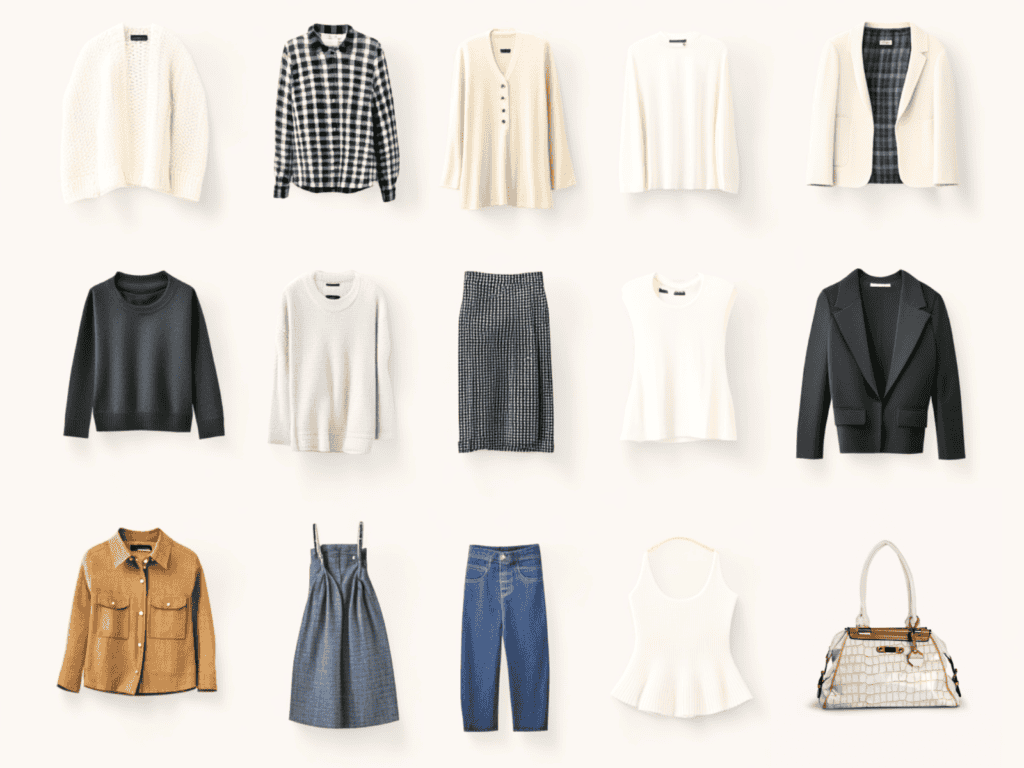
Step 1: Decluttering and Sorting
Start with a clean slate. Remove everything from your closet. Yes, everything. This might seem overwhelming, but it’s crucial.
Sort your items into four categories: keep, donate, sell, and trash. Be honest with yourself. It probably doesn’t belong in your keep pile if you haven’t worn it in a year.
Evaluate each category carefully. Look at your tops, bottoms, shoes, and accessories separately. This helps you see what you have too much or too little of.
Remember the 80/20 rule: we typically wear 20% of our clothes 80% of the time. Focus on keeping that vital 20%.
For further guidance, consider exploring decluttering methods like KonMari or Four-Box.
Step 2: Identifying Your Personal Style
Analyze your favorite outfits. What do they have in common? This is a clue to your personal style.
Create a style mood board. Use Pinterest or magazine cutouts to visualize your ideal wardrobe. This will guide your future purchases.
Define your color palette. Choose colors that complement each other and that you enjoy wearing. This makes outfit creation easier.
Step 3: Creating Your Capsule Wardrobe
Select versatile pieces that can be mixed and matched. Think classic styles that won’t quickly go out of fashion.
Ensure your chosen items coordinate well. This allows for numerous outfit combinations with fewer pieces.
Focus on quality over quantity. It’s better to have a few well-made items than many cheap ones that won’t last.
Example Capsule Wardrobe:
- Tops:
- 4 neutral t-shirts (white, black, gray)
- 2 long-sleeved tops (black, white or cream)
- 1-2 button-down shirts (denim, chambray)
- 1 cardigan or sweater
- 2 tank tops
- 1 turtle neck
- Bottoms:
- 1 pair of dark-wash jeans
- 1 pair of light jeans
- 1 pair of black trousers or chinos
- 1 pair of casual pants
- 1 skirt (optional, depending on your lifestyle)
- 1 pair of casual shorts
- 1 pair of denim shorts
- Activewear:
- 2 tops
- 2 pants
- 1 pair of shorts
- 1 swimwear
- Dresses:
- 1-2 versatile dresses (little black dress, wrap dress)
- Outerwear:
- 1 denim jacket
- 1 blazer or tailored jacket
- 1 coat (depending on your climate)
- Loungewear:
- 2 pair of pajamas
- 1 comfy top
- 1 comfy pants
- Shoes:
- 1 pair of sneakers
- 1 pair of workout shoes
- 1 pair of boots or booties
- 1 pair of flats or sandals
- 1 pair of heels
- 1 pair flip flops
- 1 pair of winter boots
- Accessories:
- A few scarves, belts, or jewelry to add personality
This is just a starting point; you can customize it based on your lifestyle, climate, and personal preferences. The key is to choose items that you love, that fit well, and that can be easily combined to create a variety of outfits.
Step 4: Organizing and Storing
Implement efficient storage solutions. Use matching hangers, drawer dividers, and shoe racks to keep everything tidy.
Arrange your clothes by category or color. Choose a system that makes sense to you and stick with it.
Develop a maintenance system. Try the one-in-one-out rule: for every new item you buy, one must go. Also, consider rotating your wardrobe seasonally.
Step 5: Living with Your Minimalist Closet
Experiment with different outfit combinations. You might be surprised at how many looks you can create with fewer pieces.
Document your successful outfits. Take photos or notes to remember combinations you like.
Address challenges as they arise. Consider versatile pieces that can adapt to different situations, such as special occasions or weather changes.
Step 6: Reflection and Adjustment
After living with your minimalist closet for a while, evaluate your experience. What’s working? What isn’t?
Make necessary tweaks to your wardrobe. Adjusting your capsule as you learn more about your needs and preferences is okay.
Remember, a minimalist closet is a journey, not a destination. Be patient with yourself and enjoy the process of simplifying your life.
Technology-Assisted Minimalism

Technology can be a powerful ally in your minimalist wardrobe journey in today’s digital age. Several organization apps and digital tools can help you track outfits and manage your wardrobe efficiently.
Apps like Stylebook and Smart Closet allow you to catalog your clothes digitally. You can plan outfits, track wear frequency, and even calculate cost per wear. These tools make it easier to identify your most-worn items and spot redundancies.
Virtual closets, available in many of these apps, offer a visual way to plan and organize your wardrobe. They’re especially useful when shopping, helping you avoid duplicate purchases or items that don’t match your existing clothes.
By leveraging these technologies, you can make more informed decisions about your wardrobe, supporting your minimalist goals.
Seasonal Capsule Wardrobe Rotation

A seasonal capsule wardrobe involves creating multiple small wardrobes for different seasons. This approach allows you to adapt to weather changes while maintaining a minimalist approach.
To create season-specific capsules, focus on versatile pieces appropriate for each season’s weather. For example, your summer capsule might include lightweight fabrics and brighter colors, while your winter capsule would feature warmer materials and layers.
When storing off-season items, use airtight containers or garment bags to protect clothes from dust and pests. Vacuum storage bags can save space for bulky winter items.
Financial Analysis of a Minimalist Wardrobe

Mindful Shopping Strategies

Tips for Success

How to Maintain Your Minimalist Closet Long-Term
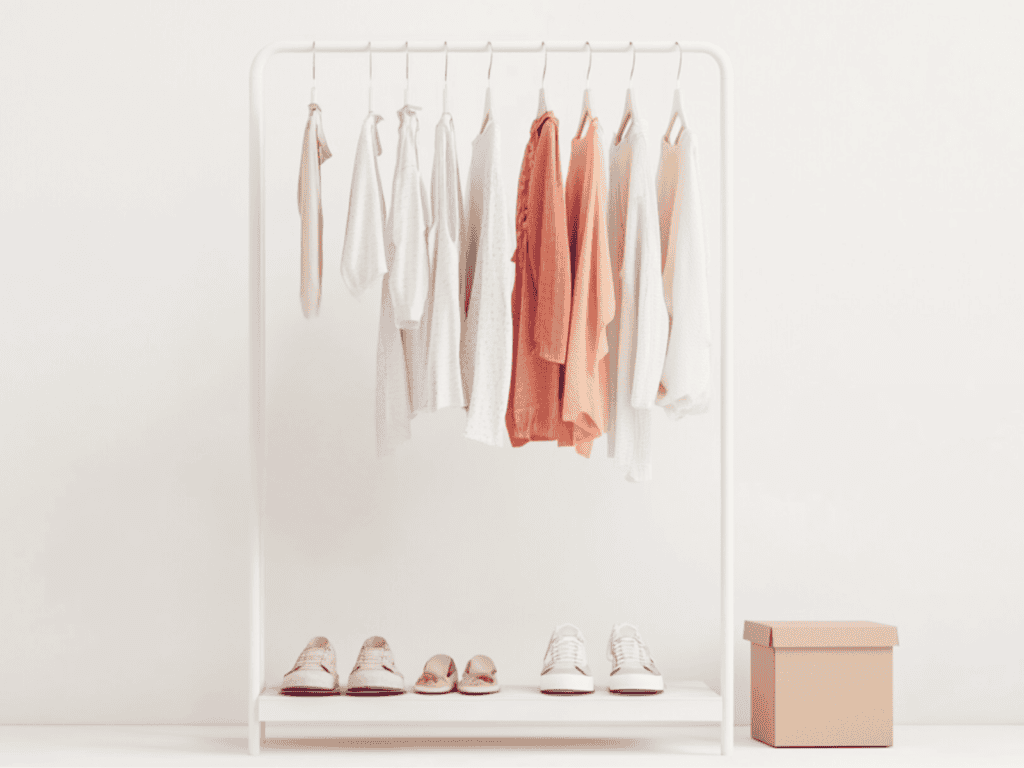
The Environmental and Ethical Impact of a Minimalist Closet

Overcoming Common Challenges

Minimalist Closet Ideas for Different Lifestyles

FAQs
1. How many items should be in a minimalist closet?
A minimalist closet typically has 30-50 items, but this can vary based on your lifestyle and needs.
2. How long does completing the minimalist closet challenge typically take?
The challenge can take anywhere from a weekend to several months. Go at your own pace, and don’t rush the process.
3. Can I still be stylish with a minimalist closet?
Absolutely! Minimalism often enhances style by focusing on pieces you truly love that work well together.
4. What if my weight fluctuates?
Choose adjustable clothing (e.g., wrap dresses) and focus on fit at your current size. Include a few flexible pieces that can accommodate minor weight changes.
5. How do I handle special occasion outfits in a minimalist wardrobe?
Rent or borrow for truly rare occasions. For semi-regular events, include a versatile dress-up option in your capsule wardrobe.
6. Can I adapt the challenge to fit my specific needs or timeline?
Yes, adapt the challenge to fit your life. The goal is to simplify, not to follow strict rules. Make it work for you.
7. How do I convince family members to support my minimalist closet journey?
Lead by example. Share the benefits you experience and invite them to join you. Be patient and respect their choices.
8. Is it possible to have a minimalist closet with children or as a parent?
Yes! Focus on mix-and-match pieces and be realistic about your needs. Remember that children’s wardrobes can be minimalist too.

Conclusion
A minimalist closet can transform not just your wardrobe but your entire approach to life. It offers freedom from excess, clarity in your personal style, and a step towards more conscious living.
Start the challenge at your own pace. Remember, it’s a journey, not a race. Every small step towards minimalism is a victory.
We’d love to hear about your experiences! Share your minimalist closet journey in the comments below. Your insights could inspire others to create a simpler, more intentional wardrobe.

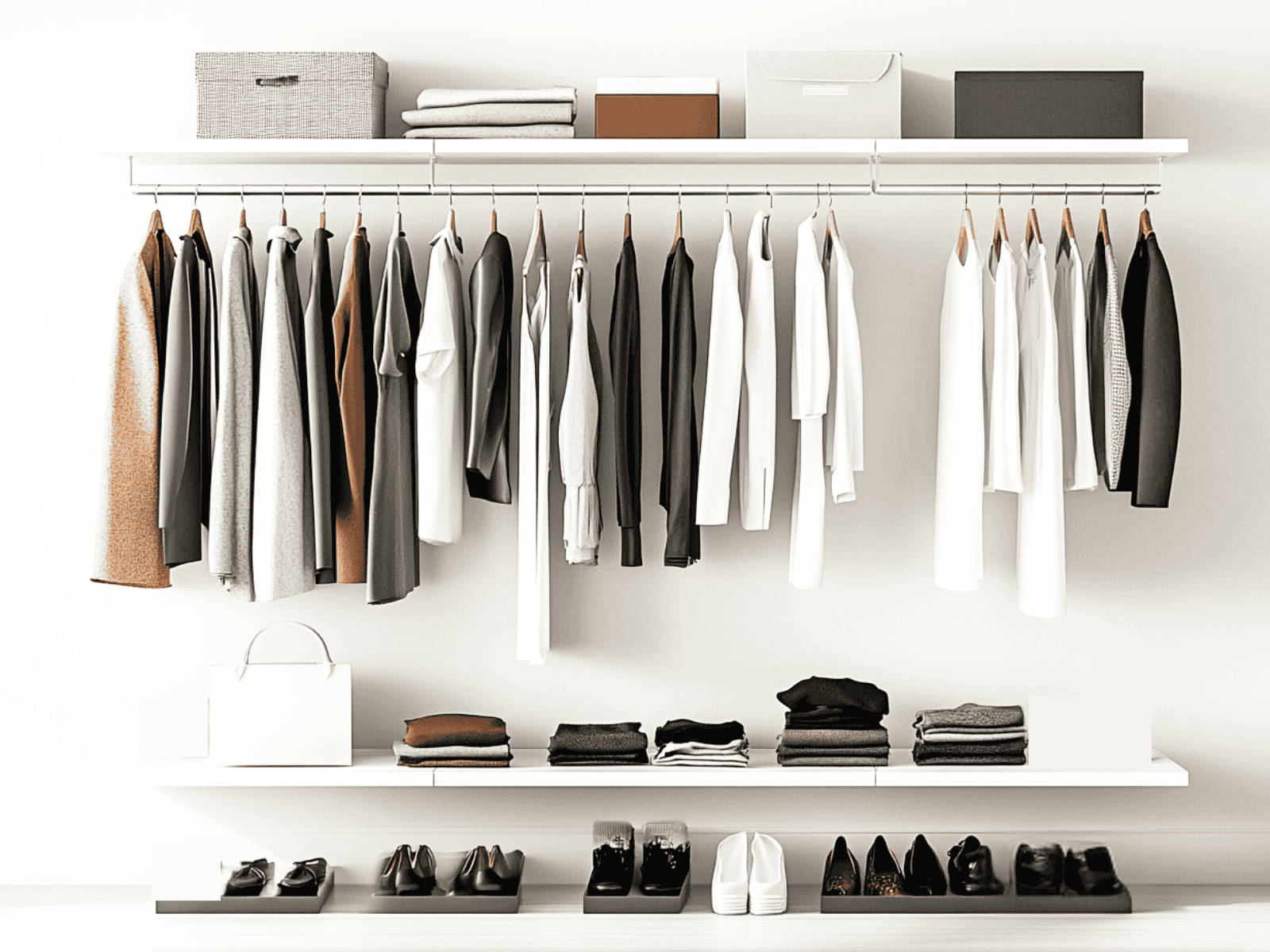


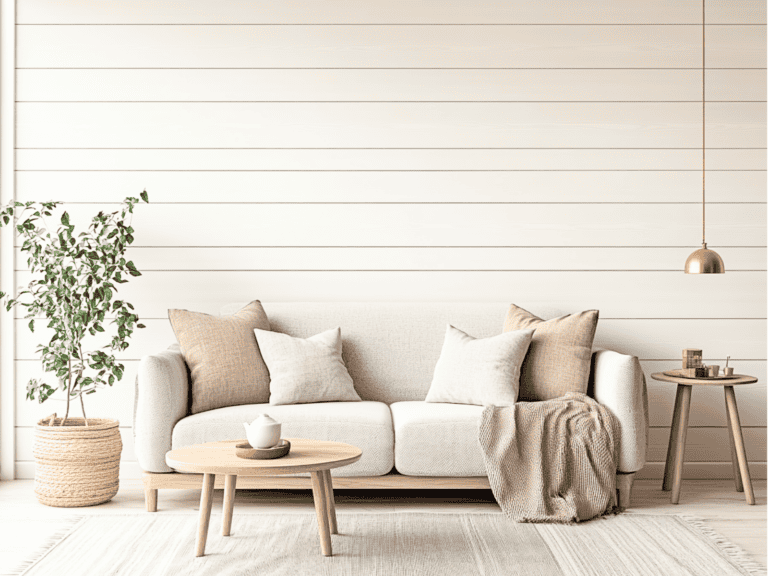
I so need this in my life right now. You have given such a great breakdown of how to accomplish simplifying your closet. Closet organization is key!
I’m so happy to hear that the breakdown was helpful and inspiring! Closet organization can make a big difference in our daily lives. It’s all about finding what works for you and creating a system that makes getting dressed a breeze. Good luck on your journey to a more simplified and organized closet!
LOVE this! My daughter got me to do this a few years ago, when we started selling on Poshmark. She’s better at it than I am. Everything she has in her closet is for sale, and she keeps changing it out. Me, I am just keeping a few items, and change them out each year. My husband now has 3/4 of the closet! lol Thanks for a great guide and this is inspiring for others wanting to minimize.
That’s fantastic! It’s great to hear that you and your daughter have found success with decluttering and selling clothes on Poshmark. It sounds like you’ve both found a balance that works for you.
I’m glad the guide was helpful and inspiring. It’s wonderful to see how embracing minimalism can create more space and freedom in our lives. Thanks for sharing your experience!
Great tips, I’ve been doing these my whole life and it’s amazing. Always love the minimalist life and this challenge will be fun do.
That’s fantastic! It’s wonderful to hear that you’ve already embraced a minimalist approach to your closet. I’m sure you’ll find the challenge fun and perhaps even discover new ways to streamline your wardrobe further. I’d love to hear about your experiences throughout the challenge! Feel free to share any tips or insights you gain along the way.
I’m sure you’ll find the challenge fun and perhaps even discover new ways to streamline your wardrobe further. I’d love to hear about your experiences throughout the challenge! Feel free to share any tips or insights you gain along the way.